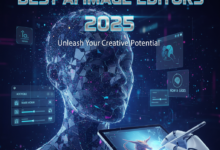How AI-Generated TV Commercials Are Changing Advertising

The advertising landscape is undergoing a seismic shift, driven by the rapid integration of artificial intelligence into the creation of television commercials. This technological evolution is redefining how brands connect with audiences, streamlining production processes, and reshaping the creative and strategic frameworks of advertising. By leveraging AI, advertisers are crafting commercials that are not only visually compelling but also hyper-targeted, cost-efficient, and adaptable to an ever-changing market. This article explores the multifaceted impact of AI-generated commercials, examining their influence on creativity, efficiency, audience engagement, and the broader advertising ecosystem.
Revolutionizing Creative Development
The creative process behind TV commercials has traditionally been labor-intensive, requiring teams of writers, designers, directors, and editors to collaborate over weeks or months. AI is transforming this paradigm by enabling rapid ideation and execution. Advanced algorithms, powered by machine learning, can generate scripts, storyboards, and even fully rendered visuals based on brand guidelines and audience data. These tools analyze vast datasets—consumer preferences, cultural trends, and historical advertising performance—to produce content that resonates with specific demographics.
For instance, AI platforms can create multiple versions of a commercial in minutes, each tailored to different audience segments. A single campaign for a global brand might feature variations in tone, imagery, or messaging to appeal to diverse cultural contexts, all generated from a single creative brief. This capability allows advertisers to experiment with bold concepts without the prohibitive costs of traditional production, fostering a culture of innovation and risk-taking in advertising creative.
Moreover, AI-driven tools are not replacing human creativity but amplifying it. Copywriters and art directors can use AI to generate initial drafts or visual mockups, freeing them to focus on refining emotional nuances or strategic messaging. This synergy between human intuition and machine precision is producing commercials that feel both polished and authentic, striking a balance that captivates viewers.
Streamlining Production and Reducing Costs
One of the most transformative aspects of AI in TV advertising is its ability to streamline production workflows. Traditional commercial production involves extensive pre-production planning, on-set filming, and post-production editing, often costing hundreds of thousands of dollars for a single 30-second spot. AI is dramatically reducing these costs by automating key stages of the process.
AI-powered tools can generate high-quality visuals without the need for physical sets, actors, or expensive equipment. For example, virtual production environments, enhanced by AI, allow brands to create lifelike scenes entirely within a digital realm. These environments can simulate everything from bustling cityscapes to serene beaches, eliminating the need for location shoots. Similarly, AI can generate realistic voiceovers or even digital actors, further reducing reliance on human talent and associated expenses.
The financial implications are significant. Small and medium-sized businesses, previously priced out of TV advertising, can now produce professional-grade commercials at a fraction of the cost. This democratization of access is leveling the playing field, enabling a broader range of brands to compete for airtime and audience attention. Additionally, the speed of AI-driven production allows advertisers to respond to market trends or consumer sentiment in near real-time, ensuring campaigns remain relevant and timely.
Enhancing Audience Targeting and Personalization
The ability to deliver personalized content is a cornerstone of modern advertising, and AI-generated TV commercials are pushing this capability to new heights. By integrating with data analytics platforms, AI can craft commercials that align with individual viewer preferences, behaviors, and demographics. This level of personalization is made possible through the analysis of vast datasets, including viewing habits, purchase history, and social media activity.
For example, a streaming platform using AI might deliver a commercial tailored to a viewer’s favorite genre, featuring imagery and messaging designed to resonate with their specific tastes. This targeted approach contrasts sharply with the one-size-fits-all model of traditional TV advertising, where a single commercial is broadcast to a broad audience. AI’s ability to create dynamic, viewer-specific content is enhancing engagement rates and driving higher return on investment for advertisers.
Furthermore, AI enables real-time optimization of commercials. Algorithms can monitor viewer responses—such as engagement metrics or social media reactions—and adjust elements like pacing, music, or call-to-action phrasing to maximize impact. This iterative approach ensures that commercials evolve in response to audience feedback, creating a feedback loop that continually refines campaign effectiveness.
Navigating Ethical and Regulatory Challenges
As AI-generated commercials become more prevalent, they raise important ethical and regulatory considerations. One key concern is the potential for AI to perpetuate biases present in the data it analyzes. If historical advertising data reflects outdated stereotypes or cultural insensitivities, AI-generated content risks amplifying these flaws. Advertisers must implement robust oversight mechanisms to ensure that AI-produced commercials align with ethical standards and promote inclusivity.
Transparency is another critical issue. Viewers may not always be aware that a commercial was created using AI, particularly when digital actors or synthetic voices are involved. Regulatory bodies in some regions are beginning to explore guidelines requiring disclosure of AI-generated content to maintain consumer trust. Advertisers must stay ahead of these evolving regulations to avoid potential backlash or legal challenges.
Additionally, the use of AI in advertising raises questions about intellectual property. When AI generates a commercial based on existing datasets, who owns the resulting creative output? Brands, agencies, and AI developers must navigate complex legal frameworks to clarify ownership and ensure compliance with copyright laws. These challenges underscore the need for a balanced approach that leverages AI’s capabilities while upholding ethical and legal standards.
Redefining Metrics of Success
The integration of AI into TV advertising is also reshaping how success is measured. Traditional metrics, such as reach and impressions, are being supplemented by more granular indicators enabled by AI analytics. Advertisers can now track viewer sentiment, emotional resonance, and even purchase intent with unprecedented precision. These insights allow brands to assess not only how many people saw their commercial but also how it influenced their perceptions and behaviors.
AI-driven analytics also enable A/B testing on a scale previously unimaginable. By generating multiple versions of a commercial and deploying them across different markets, advertisers can identify which elements—such as color schemes, taglines, or music—drive the strongest response. This data-driven approach is replacing guesswork with evidence-based decision-making, allowing brands to allocate budgets more effectively and optimize campaign performance.
Shaping the Future of Brand Storytelling
As AI continues to evolve, its role in TV advertising is poised to expand further, redefining the art and science of brand storytelling. The ability to create hyper-realistic, emotionally resonant commercials at scale is empowering brands to forge deeper connections with audiences. At the same time, the accessibility of AI tools is fostering a more competitive and diverse advertising landscape, where creativity and innovation are no longer constrained by budget or resources.
Looking ahead, the integration of AI with emerging technologies like augmented reality and interactive TV could further transform the viewer experience. Imagine a commercial that adapts in real-time based on a viewer’s interactions or incorporates elements of their physical environment through AR. These possibilities, once the stuff of science fiction, are now within reach, promising a future where TV commercials are not just advertisements but immersive, personalized experiences.
The rise of AI-generated TV commercials marks a pivotal moment in the evolution of advertising. By streamlining production, enhancing personalization, and redefining creative possibilities, AI is enabling brands to engage audiences in ways that were previously unimaginable. As the industry navigates the challenges and opportunities of this technology, one thing is clear: AI is not just changing how commercials are made—it is redefining how brands tell their stories and connect with the world.






